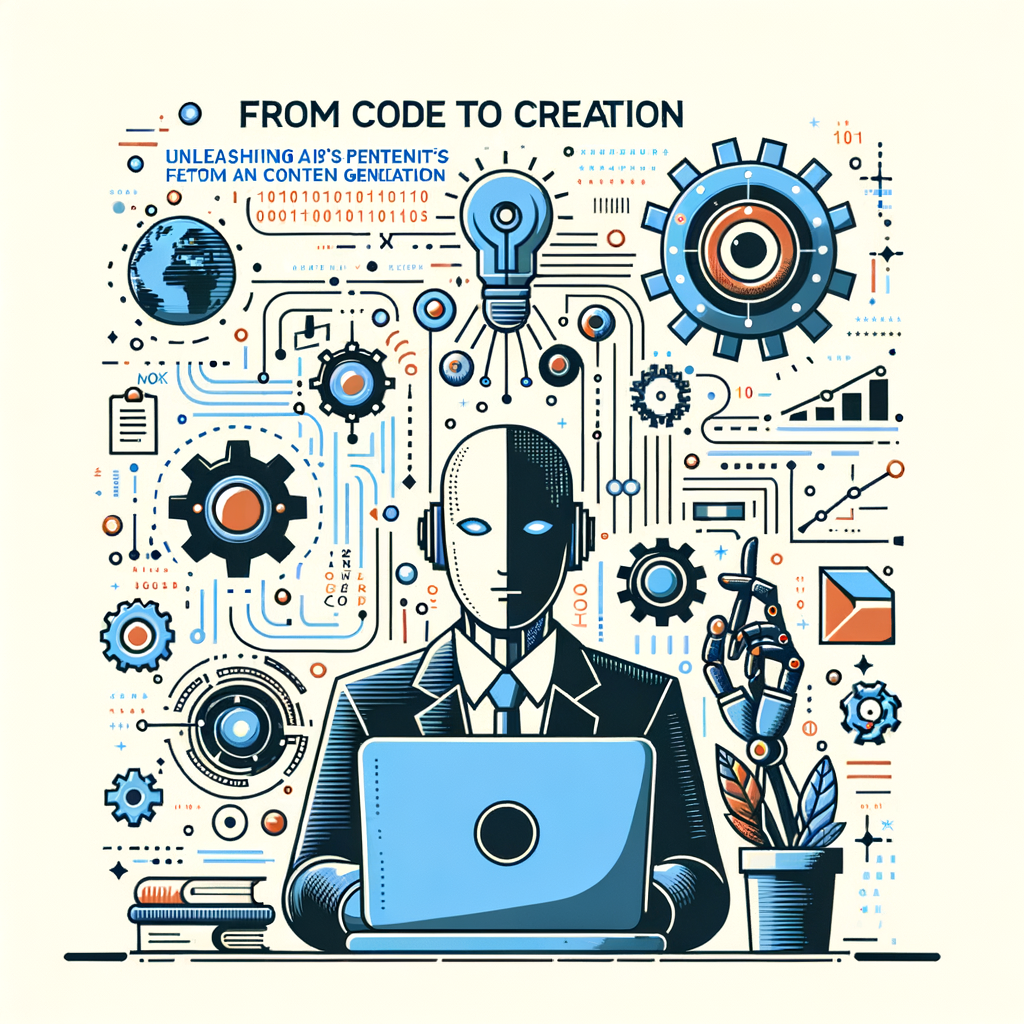
From Code to Creation: Unleashing AI's Potential in Content Generation
Explore the transformative world of AI content generation in this immersive blog post. Discover how AI technologies are revolutionizing the way we create, curate, and consume digital content. Delve into the mechanics of AI-driven language models, creative tools, and the future of automated content production. Understand the implications for businesses, creators, and consumers alike, as well as the ethical considerations of deploying AI in creative domains.
From Code to Creation: Unleashing AI's Potential in Content Generation
Introduction
In the ever-evolving landscape of technology, artificial intelligence (AI) has emerged as a powerful force, reshaping industries and redefining possibilities. One of the most exciting and impactful applications of AI is in the realm of content generation. From crafting personalized advertisements to generating realistic narratives, AI is transforming the creative world by automating processes and enhancing creativity.
This blog post seeks to delve into the fascinating world of AI content generation. We will explore the underlying technologies, the tools available, and the vast potentials and challenges they bring. We aim to provide you with a comprehensive understanding of how these systems work, their implications for various fields, and the ethical considerations that come with AI-driven creativity.
Understanding AI Content Generation
AI content generation leverages complex algorithms, neural networks, and machine learning models to create content. These systems are trained on vast datasets that help them understand language patterns, tones, styles, and more. Key technologies in this space include:
-
Natural Language Processing (NLP): NLP enables machines to understand and mimic human language. It's the backbone of AI writing tools, providing the ability to generate human-like text across different contexts and languages.
-
Generative Adversarial Networks (GANs): Originally designed for tasks like image synthesis, GANs have been adapted for text generation tasks, offering creative outputs in storytelling and other narrative forms.
-
Transformer Models: Models such as GPT (Generative Pre-trained Transformer) have revolutionized AI writing by utilizing deep learning to interpret and generate text with remarkable accuracy.
Tools and Applications
Numerous AI-driven tools have emerged, each designed to make content creation quicker, easier, and more effective:
-
Content Writing Platforms: Services like Writesonic and Copy.ai automate the creation of blog posts, ad copy, and other written content.
-
Creative Writing: Advanced software like OpenAI's GPT-3 can help in drafting fictional stories, scripts, and even poetry with a coherent narrative thread.
-
Visual Content Creation: While primarily text-focused, AI is also enhancing visual content through tools that automatically generate social media graphics or video scripts using associated data and keywords.
Implications for Industries
AI content generation's impact spans various industries:
-
Marketing and Advertising: AI allows for hyper-personalized ads, crafting messages tailored to specific audiences at scale.
-
Publishing and Media: Traditional processes are being revamped, offering faster news generation and content personalization.
-
Education: AI generates adaptive learning materials, offering students personalized explanations and coursework based on their learning patterns.
Ethical Considerations
While AI presents vast opportunities, it also prompts ethical questions:
-
Plagiarism and Authenticity: Ensuring the authenticity of AI-generated content is crucial. Clear guidelines and practices must be established to prevent issues like plagiarism.
-
Bias and Fairness: AI systems can inherit biases from their training data, potentially leading to skewed or unfair outputs. Continuous monitoring and adjustment of these systems are necessary to mitigate such concerns.
Conclusion
As AI technology continues to advance, the potential for AI in content generation grows exponentially. However, unlocking this potential requires meticulous balancing between innovation and ethical practice. By understanding and harnessing AI's capabilities responsibly, we can transform how digital content is generated and consumed, opening new avenues for creativity and efficiency.
AI content generation is not merely about automating tasks; it's about augmenting human creativity and providing tools to explore new creative domains. As we navigate this exciting frontier, ongoing collaboration between technologists, creators, and ethicists will be paramount in ensuring these technologies drive positive outcomes across all sectors.